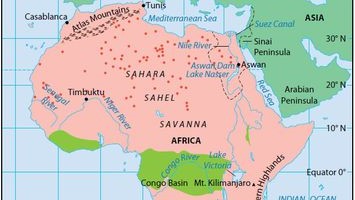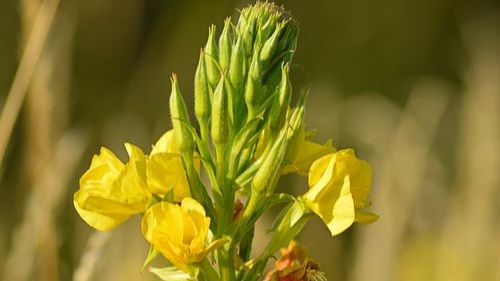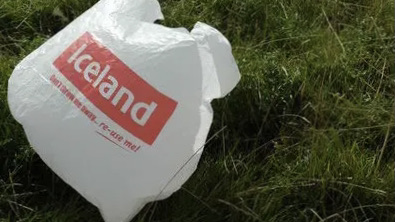Africa has many different physical features and climates. Those features and climates change as you progress from Africa’s northern coast on the Mediterranean Sea to southern Africa.
A narrow strip of land lies along northwestern Africa. It is mostly flat and has warm, rainy winters and hot, dry summers. This land lies between the Mediterranean Sea and the Atlas Mountains 200 miles to the south. It stretches east about 1,200 miles from the present-day city of Casablanca to the present-day city of Tunis. That’s more than one third the width of the United States!
The Atlas Mountains form a barrier between northwest Africa and a large desert called the Sahara. There are no barriers between the Sahara and the Mediterranean in northeast Africa. The desert stretches right to the sea.
South of the Sahara Desert is the savanna. This is a large region of tall grasses that stretches from the Atlantic Ocean in the west to the highlands of the present-day country of Ethiopia in the east. The savanna has warm temperatures, especially during the “dry season.”
As you travel south of the savanna, temperatures remain warm but rainfall increases. Warm temperatures and heavy rainfall create tropical rainforests throughout central Africa. Africa’s rainforests are covered with dense vegetation. They are similar to the rainforests of Brazil, Indonesia, and other parts of the world.
There aren’t any “seasons” in tropical rainforests. The climate is the same all year. The temperature usually stays between 75 and 80°F. This part of Africa usually gets between 80 and 400 inches of rain a year. Because of this climate, the rainforest is home to thousands of different types of plants.
South and east of the rainforests, Africa’s land features and climates vary. Different areas are made up of rolling savannas, mountains, or desert.









